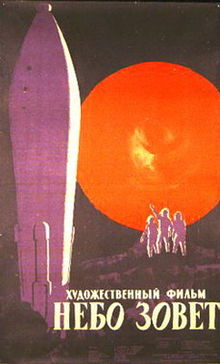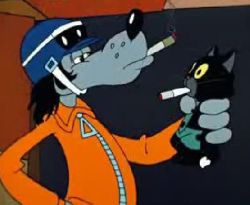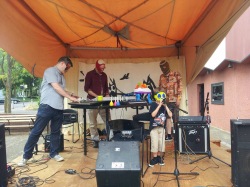 Chicken Grabber * Nite Hawks * Lost Treasures! Rarities From the Vaults of Del-Fi Records.
Chicken Grabber * Nite Hawks * Lost Treasures! Rarities From the Vaults of Del-Fi Records.
Upon first listen, it is easy to say that this song is only known for its appearance in the 1997 cut of Pink Flamingos, and leave it at that, but the nature of the “rarities” on this collection is that these were songs that fell between the cracks of popular music in the late ’50’s and early ’60’s. Each of the singles featured hear are prized among collectors for their weirdness, the performances, and the incredibly precise recording techniques, something that few studios in LA were able to achieve as bands became more sophisticated. The glue that holds this compilation together is the exotica and surf undertones, and Bob Keane knew that when he assembled the disc.
Getting “Chicken Grabber” in the new cut of a John Waters flic sent that message from the get-go, and while the disc does not contain a single song by any of the artists on Del-Fi that did have hits, that is the genius of the collection. Most of the hits Del-Fi had were over-comped even contemporaneously. But these tunes are rarely heard, not only because the discs retail for $150 on the open market, but because the bands were never popular enough to demand their inclusion on previous compilations. Like Del-Fi records itself, this compilation was trying to bring other bands to the masses, and not just the Ritchie Valens‘ of the world.
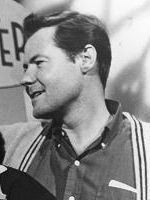 Del-Fi Records got its start in 1958, but the man behind Del-Fi – Bob Keane – was an entertainment business figure going back to the late ’30’s, when he put together a big band that he led via the clarinet at the age of 16. In yet another example of radio playing a major roll, when KFWB in Los Angeles broadcast one of his band’s performances, he got an offer from MCA, the first of many deals that would never seem to last for very long. MCA promoted him as “The World’s Youngest Bandleader” for exactly three years, when the dropped him out of fear that he would get drafted for the war.
Del-Fi Records got its start in 1958, but the man behind Del-Fi – Bob Keane – was an entertainment business figure going back to the late ’30’s, when he put together a big band that he led via the clarinet at the age of 16. In yet another example of radio playing a major roll, when KFWB in Los Angeles broadcast one of his band’s performances, he got an offer from MCA, the first of many deals that would never seem to last for very long. MCA promoted him as “The World’s Youngest Bandleader” for exactly three years, when the dropped him out of fear that he would get drafted for the war.
Bob took this in stride, and decided to beat fate to the punch, and offered his services to the Army Air Force. I like to imagine that, in some obscure way, Bob and Vyacheslav somehow crossed paths, and where completely unaware. Bob was eventually let go from the Air Force due to a lung infection, so he returned to LA to heal. When he was well enough, he returned to music, and worked as a clarinet for hire until 1955. Occasionally he got work in radio, but they asked him to change his last name – Kuhn – out of fear that audiences would think that Bob was black when he was introduced as Bob Coon. From 1950 on, he used the name Bob Keane.
There are several versions of how Bob Keane & John Siamas met, but one thing is absolutely clear: in 1955 they discussed the idea of getting all the talent that they run into on the club circuit, and putting out their records. They would each tell the other that they see people who are 100 times better than the records you could buy in stores. If only the people they played with had a record label where they could come and cut a session, they would be in business. Sometime after these conversations, they shook hands, pooled their resources with Siamas’ brother, Alex, and decided that they would release a record by an artist that mattered. They immediately turned to an artist that Bob had been raving about, in spite of the Siamas brothers having never heard of him: Sam Cooke
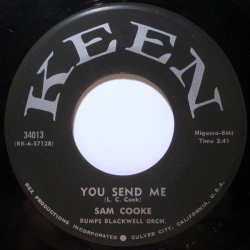 The first release on Keen Records was “Summertime” b/w “You Send Me” in 1957, part of Sam’s three-year contract with Keen. It got decent enough airplay, but when DJs discovered the b-side, the single began to really move in stores, and on 25 November 1957, the record hit #1 on The Billboard. Keen Records was raking in the dough.
The first release on Keen Records was “Summertime” b/w “You Send Me” in 1957, part of Sam’s three-year contract with Keen. It got decent enough airplay, but when DJs discovered the b-side, the single began to really move in stores, and on 25 November 1957, the record hit #1 on The Billboard. Keen Records was raking in the dough.
Like any smart businessman, Bob when to John and asked how he wanted to structure the business of Keen Records. John pretended he had no idea what Bob was talking about. John offered a session musician’s paycheck for finding Sam, and countered with another offer to let Bob buy into Keen Records with a $5K investment, which Bob could not afford. The label was named after him, but Bob walked away, and before John was done laughing with his brother, founded had Del-Fi Records later that same month.
While Bob was litigating the Siamas’ over their assholedness, he turned to the next artist he hand gotten to know on the club circuit, Henri Rose, and rushed a recording of “Caravan” b/w “September Song” on 45 under the Del-Fi label in early 1958. Bob had intentionally picked Henri because they were friends, and gave Henri the most flexible contract he could devise, on purpose. He knew that someone would come calling in an effort to buy-out Henri Rose once anyone with half-a-brain heard what Henri could do, and Bob only had to wait for the call to come in.
By Spring, Warner Brother’s Records waved an $8000 check in front of Bob for Henri, just as a settlement check was already deposited into his account. Bob considered that revenge enough and moved on to his next trick: Making Del-Fi the epicenter of LA cool.
 There are two distinct periods in Del-Fi’s catalog: the early rock ‘n’ roll period, and the later surf period, but in the roughly 10 years Del-Fi existed, they alway managed to have a very agreeable policy when it came to checking out new bands. Bob knew from experience that the guys that were best on the club circuit worked hard every day, no matter how little money was on the line, and often those were the best artists. But it would often take a little while to find this out about these incredible artists, and it was better to let everyone have a chance rather than hold out for a guarantee.
There are two distinct periods in Del-Fi’s catalog: the early rock ‘n’ roll period, and the later surf period, but in the roughly 10 years Del-Fi existed, they alway managed to have a very agreeable policy when it came to checking out new bands. Bob knew from experience that the guys that were best on the club circuit worked hard every day, no matter how little money was on the line, and often those were the best artists. But it would often take a little while to find this out about these incredible artists, and it was better to let everyone have a chance rather than hold out for a guarantee.
With that philosophy at his disposal, Bob Keane did the unthinkable and assembled an incredible line-up of artists that he discovered in that 10 years: Ritchie Valens, Chan Romero, Little Ceasar and the Romans, Ron Holden, Johnny Crawford, Brenda Holloway, Frank Zappa (in his Doo Wop phase), The Bobby Fuller Four, The Surfarias, The Lively Ones, The Centurions and, Barry White. (Barry was actually made the A&R / Producer for a subsidiary of Del-Fi, and Barry handled all the artists on the Bronco label, under Bob’s Guidance. In fact, Bob was one of the few people who instantly got both surf music and R&B, and would listen to virtually any band that came through his office.
Around 1967 things began to fall apart for the music industry. It was clear that 45s were now “singles” off of LPs, which was the real product, and with psychedelic starting to really take over, Bob’s “dinosaur” perspective on the music industry didn’t seem to gel with modern bands. When The Bobby Fuller Four broke up, Bob knew that Del-Fi was over. He banked what he could, and decided to merely manage his own songs as The Keane Brothers, while selling burglar alarms to the people of LA.
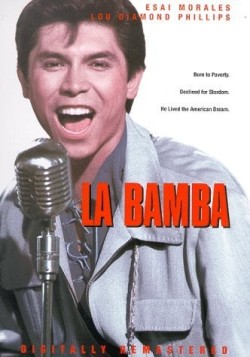 The story would probably end there, but curiously enough the time between 1967 and 1987 did wonders for Bob’s status as a legend. Since he couldn’t afford to release any new records, the collectability of Del-Fi releases went through the roof, and artists in his roster began to get relegated to the “classic oldies” status. While this had no way of affecting Bob’s income, when the La Bamba film came out in 1987, it was clear that interest in what Bob had done was back in the public consciousness.
The story would probably end there, but curiously enough the time between 1967 and 1987 did wonders for Bob’s status as a legend. Since he couldn’t afford to release any new records, the collectability of Del-Fi releases went through the roof, and artists in his roster began to get relegated to the “classic oldies” status. While this had no way of affecting Bob’s income, when the La Bamba film came out in 1987, it was clear that interest in what Bob had done was back in the public consciousness.
Bob began to assemble collections and compilations of Del-Fi classics, repackaged for public consumption. This was only helped by the success of Pulp Fiction, which not only came at a time when surf was coming back as a genre, but when interest in the original bands of Keane’s era was in high demand. Keane released collections of his records (with a few new bits here and there) for several more years, but in 2003 he realized that he could not sustain the work on his own. Again, Warner Brothers came to his aid, and in a very cool turn of events, they relegated the work of managing Del-Fi’s catalog to Rhino Records, who has the rights to “Lost Treasures,” along with everything else Bob Keane did in his career.
The Night Hawks were also a group that Bob met on the touring circuit, and their story is also fascinating. The group was let by Nesbert Hooper Jr., also known as “Stix” Hooper, and The Night Hawks evolved quite a bit, into the Jazz Crusaders, and the just The Crusaders, taking the exotica / R&B sound of this tune and becoming a very accomplished Jazz group that lasted until 2003. They did not last long as The Night Hawks, but there is something very cool and Del-Fi about this recording.
 The thing that Bob Keane was, perhaps, best at was finding artists that complimented the Tiki culture of the late ’50’s, and Del-Fi is, in many ways, a document of that early music scene in LA. in addition to all of that, Bob Keane best represents the kind of producer that they do not make anymore. His openness to artists, desire to be honest in all his business dealings, and his focus on fostering an environment where the music came first was rare in the music industry, and almost everyone he worked with spoke highly of him as a person. As the digital age creates new kinds of hassles that artists and businesses are constantly negotiating, reading about Bob Keane reminds us of an earlier time, where people made records because they, too, loved listening to them.
The thing that Bob Keane was, perhaps, best at was finding artists that complimented the Tiki culture of the late ’50’s, and Del-Fi is, in many ways, a document of that early music scene in LA. in addition to all of that, Bob Keane best represents the kind of producer that they do not make anymore. His openness to artists, desire to be honest in all his business dealings, and his focus on fostering an environment where the music came first was rare in the music industry, and almost everyone he worked with spoke highly of him as a person. As the digital age creates new kinds of hassles that artists and businesses are constantly negotiating, reading about Bob Keane reminds us of an earlier time, where people made records because they, too, loved listening to them.
 It’s a new release for the spring, with new music from all your favorite Experimental Artists.
It’s a new release for the spring, with new music from all your favorite Experimental Artists.






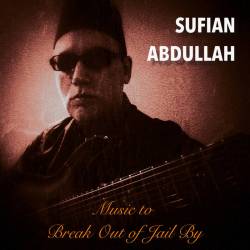


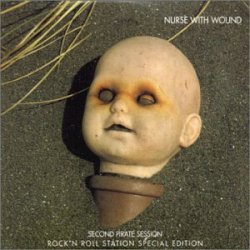





















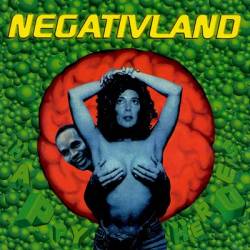



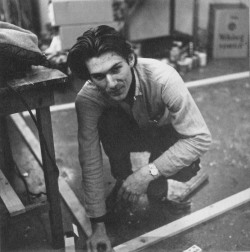

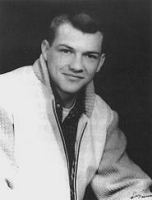
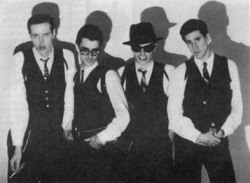

 06.) No Kolhoznoi Ptitsaferme (On The Kolkhoz Poultry Farm) *
06.) No Kolhoznoi Ptitsaferme (On The Kolkhoz Poultry Farm) * 


